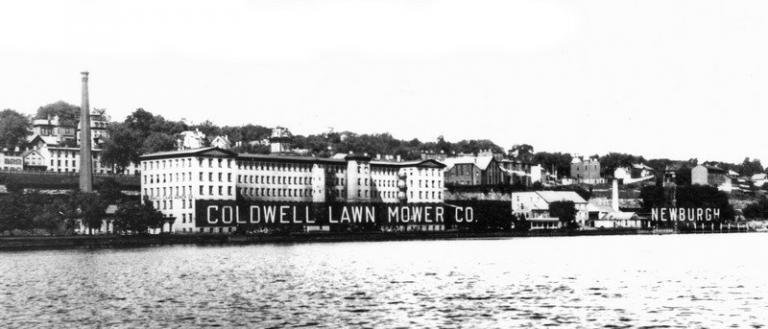Steam power was chosen to operate the mill because most of Newburgh’s industrial businesses at that time were based along the Quassaick Creek. With about 12 mills already relying on the creek for water power, that source was pretty much depleted.
Because the mill was built adjacent to the river and anchored into the bedrock east of a granite cliff, it features an unusual main entrance on North Water Street that is accessed by a pedestrian bridge on its top floor. The building opened in 1845.
One innovative technological feature that was incorporated into the mill’s riverfront side was the inclusion of a channel — almost a mini canal — under the ground floor. It allowed the river’s rising tide to flow through it while never flooding the lower level.
“Just like towns in Lowell and Lee, Massachusetts, they manufactured cotton at the Newburgh Steam Mill,” said City of Newburgh Historian Mary McTamaney. “The cotton was shipped up from the south.
“Newburgh could outproduce the annual output in New England because although their capacity was huge, they had to shut down when the Connecticut River froze in winter. They were water powered and we had steam power.”

The Newburgh mill employed 300 workers, primarily women who oversaw 17,000 spindles operating in the building.
While the mill maintained a profitable output, by the early 20th century, it — along with many other northern operations — shut down.
“They began to build more mills in the south during that time because it became easier and less expensive to build the manufacturing end of the cotton process closer to the production end of it,” McTamaney said.
The next company to utilize the Newburgh building was Coldwell Lawn Mower Company, a business that opened in 1881 and operated near the Washington Headquarters historic site. When a fire destroyed that building the company relocated to the mill in 1910.
As the largest worldwide lawn mower manufacturer, the company produced 20 different styles of mowers that included hand-powered, horse-powered and eventually motor-powered.
Producing between 150 and 200 lawn mowers daily, the company flourished through the 1940s, at which time it was sold and went through a series of mergers. Today, the original Coldwell operation is part of the large Toro Company, based in Minneapolis, Minnesota.
With the large building once again available, another company, Licht and Kaplan, a handbag manufacturing outfit operating in the southern section of Newburgh, relocated to the riverside facility in 1947. Eventually changing its name to Regal Bag Corporation, it also employed hundreds of local residents.
Through the years, the operation transformed from manufacturing bags to importing them and then eventually shut down. The building is still owned by the Kaplan family.
The top floor is now occupied by a company that manufactures the backdrops for Broadway productions, while the fifth floor serves as artist studios and galleries. The building itself represents a transformation in Newburgh history.
“When the steam powered mill opened, it was really the start of Newburgh’s industrial age,” Lange said.
“Dateline” appears Wednesdays in the Poughkeepsie Journal. To suggest a topic, email Anthony Musso at railcommute@gmail.com
